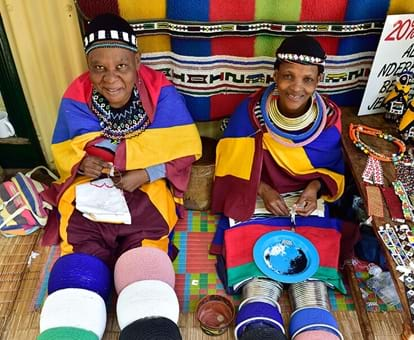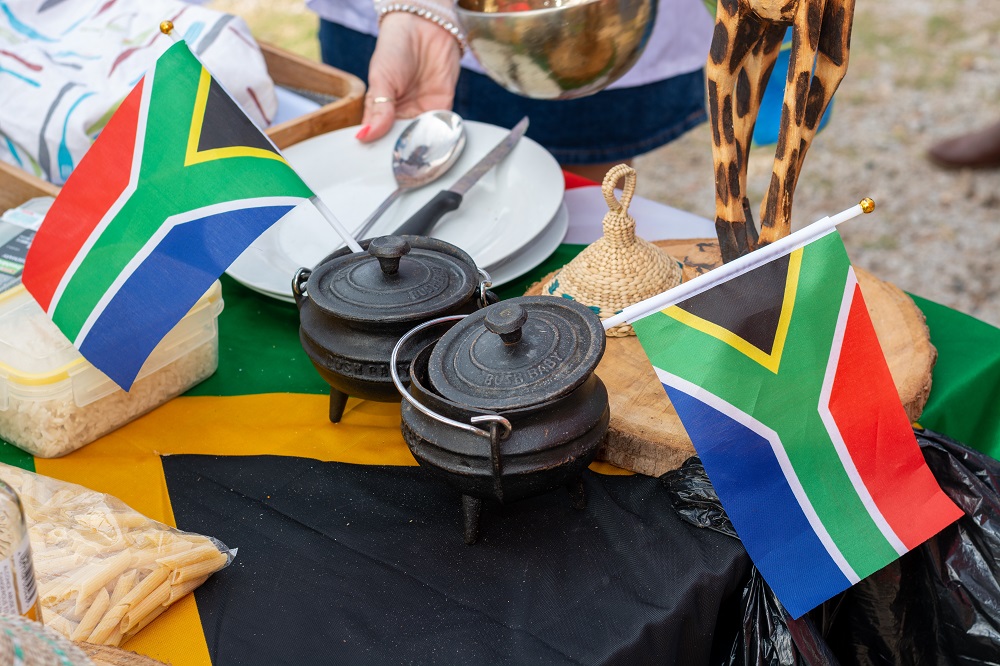Not known Facts About South African Culture Today
Not known Facts About South African Culture Today
Blog Article
The Basic Principles Of South African Culture Today
Table of ContentsSouth African Culture Today Things To Know Before You Get ThisWhat Does South African Culture Today Mean?Some Ideas on South African Culture Today You Need To KnowThe Main Principles Of South African Culture Today Fascination About South African Culture TodaySome Known Facts About South African Culture Today.
A matter of value in Zambian towns is the passing away of enjoyed ones. All participants of the village put money, time and effort together for the interment of the deceased.Songs and dance is a really vital facet of the Zambian society. The numerous tribal systems have their own dance types; however, makishi is common among all people.
Top Guidelines Of South African Culture Today
When it involves music, drums are made use of the most, with a range of drumming events. In Zambia, majority of individuals are Christian; Protestant and Roman Catholic. There are small teams of Muslims and Hindus, with the remainder adhering to local indigenous tribal ideas.

South African heritage and culture is profoundly varied, and includes many different groups of people that each have their own traditions and ideas. Having such a variety of people and societies is what makes South Africa so one-of-a-kind. In truth feeling of the expression, we are a rainbow nation.
Making it the 7th on the list of nations with the most Portuguese people in it outside of Portugal. Portuguese is not only a society, yet it is likewise a language and a nationality. Portuguese people stem from the country of Portugal in Europe, however, due to Portugal (like several various other countries in Europe) exploring the globe and dominating other nations during the 15th 20th centuries, South Africa has what we call Portuguese South African's living in it.
Facts About South African Culture Today Revealed
Amongst the famous features of the topography is a plateau that covers nearly two thirds of the center of the nation. The plateau complex climbs toward the southeast, where it climaxes in the Drakensberg array, part of a cliff that divides the plateau from the coastal locations. The Drakensburg consists of Champagne Castle, the highest possible top in the nation.
The area north of the Witwatersrand, called the bushveld, slopes downward from east to west towards the Limpopo River, which forms the worldwide boundary. The western area of the plateau, the middleveld, also comes down in the direction of the west and varies in altitude between the highveld and bushveld. Between the Drakensburg and the eastern and southerly coast, the land descends to the sea.
Nearer the coast there is a low-lying level called the eastern lowveld. Southwest of the plateau the nation becomes gradually much more dry, paving the way to the hostile desert of the Great Karroo, verged on the east by the lower, better sprinkled plateau of the Little Karroo. Dividing the completely dry southern interior from the sandy littoral of the southern coastline and West Cape is an additional array, the Langeberg.
A Biased View of South African Culture Today
The country's racially, ethnically, and politically separated background has created national and subnational symbols that still operate as signs of the country, and others signs that are accepted only by certain teams. The monuments to white settler conquest and political dominance, such as the Afrikaner Voortrekker ("pioneer") Monolith in Pretoria and the Rhodes Monolith honoring the British colonial empire builder and Cape prime minister Cecil Rhodes, continue to be sectarian icons.
The very first contemporary residents were the San ("bushman") hunter-gatherers and the Khoi ("Hottentot") peoples, that rounded up livestock (South African culture today). The San might have existed for countless years and left evidence of their visibility in countless ancient cavern paints ("rock art"). Bantu-speaking clans that were the ancestors of the Nguni (today's amaZulu, amaXhosa, amaSwazi, and vaTsonga individuals) and Tswana-Sotho language groups (today's Batswana and Southern and Northern Basotho) migrated below east Africa as very early as the fifteenth century

The 2 previous republics of the Orange Free State and Transvaal (South African Republic) were established by Afrikaner inhabitants that defeated and dispossessed the Basotho and Batswana. Lesotho would certainly have been forcibly integrated right into the Orange Free State without the extension of British security in 1869. The best unification of the country arised from the South African Battle (18991902) between the British and the two Afrikaner republics, which lowered the country to mess up at the start of the twentieth century.
Afrikaners historically considered themselves the only true South Africans and, while providing full citizenship to all homeowners of European descent, rejected that condition to individuals of shade till the autonomous shift of 1994. British South Africans preserve a feeling of social and social connection to Great Britain without weakening their Visit Website identity as South Africans.
All About South African Culture Today
The variety and fragmentation within ethnic groups and the equilibrium of stress between those groups throughout the twentieth century prevented interethnic civil problem. While intergroup stress over sources, entitlements, and political dominance remain, those problems are as most likely to pit Zulu against Zulu as Zulu versus Xhosa or African versus Afrikaner.
From colonial India, British vendors and managers brought the rounded metal ornamental roofs and slim lace work columns that still typify the verandas of homes in communities and cities throughout the country. Homes of worship add a vital architectural aspect also in the tiniest towns. Along with the look at these guys rising steeples and traditional stonework of Afrikaans Dutch Reformed churches, Anglican churches, synagogues, mosques, and Hindu shrines give range to the religious building scene.

Butchering and the brewing of conventional grain beer are important in protecting the engagement and goodwill of the ancestors that are taken into consideration the guardians of good luck, success, and well-being. Indian communities keep their native culinary customs and use them on Islamic and Hindu routine and ritualistic occasions. Afrikaners and Coloured people gather at weekends and special events at multifamily bbqs called braais, where community bonds are strengthened.
Since this was the main financial business of both black Africans and white homesteaders, problem in between those teams focused on the possession of grazing land and livestock. In 1867, the biggest ruby deposits in the world were discovered at Kimberley in the west main location. The riches from those fields assisted fund the exploitation of the best gold coral reef on the planet, which was uncovered on the Witwatersrand in 1886.
The 9-Second Trick For South African Culture Today
This resulted in misunderstandings and deliberate misstatement in the negotiations of white settlers and federal government authorities with African chiefs during the early american period (South African culture today). In the establishment of African gets, some elements of communal and primarily "tribal depend on" land tenure were preserved, and also in white backwoods, forms of public period were still practiced in areas with African communities
After the autonomous change of 1994, programs for land restitution, redistribution, and reform were set up, but development has actually been slow-moving. The white minority still manages eighty percent of the land. In the wake of helpful resources farming land invasions in Zimbabwe, the Division of Land Affairs has actually pledged to speed up land redistribution.
Report this page